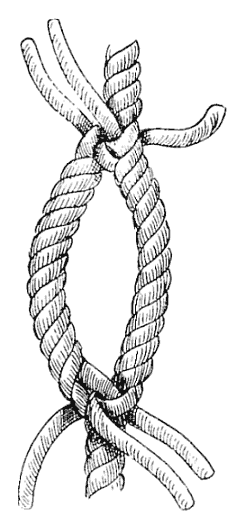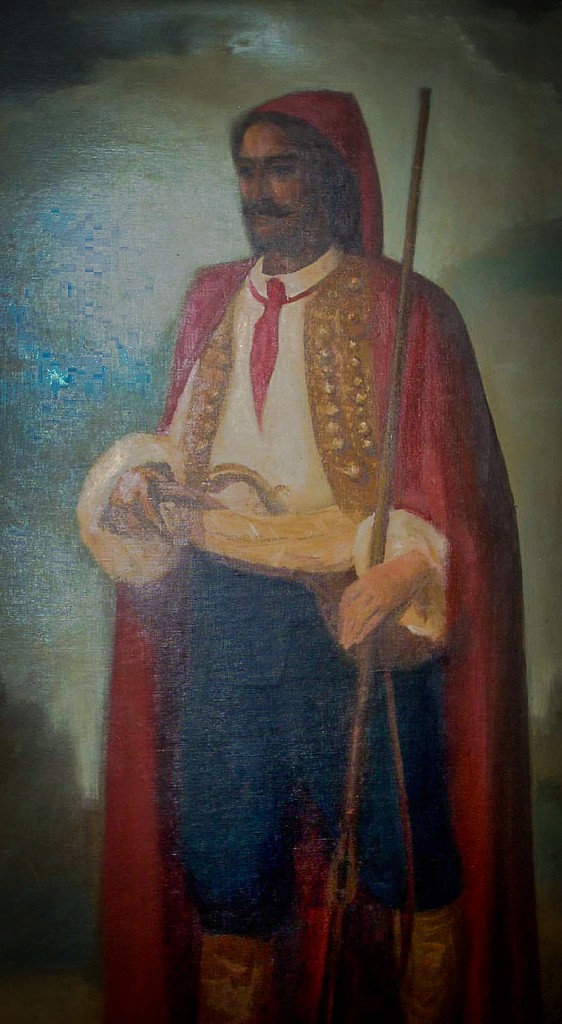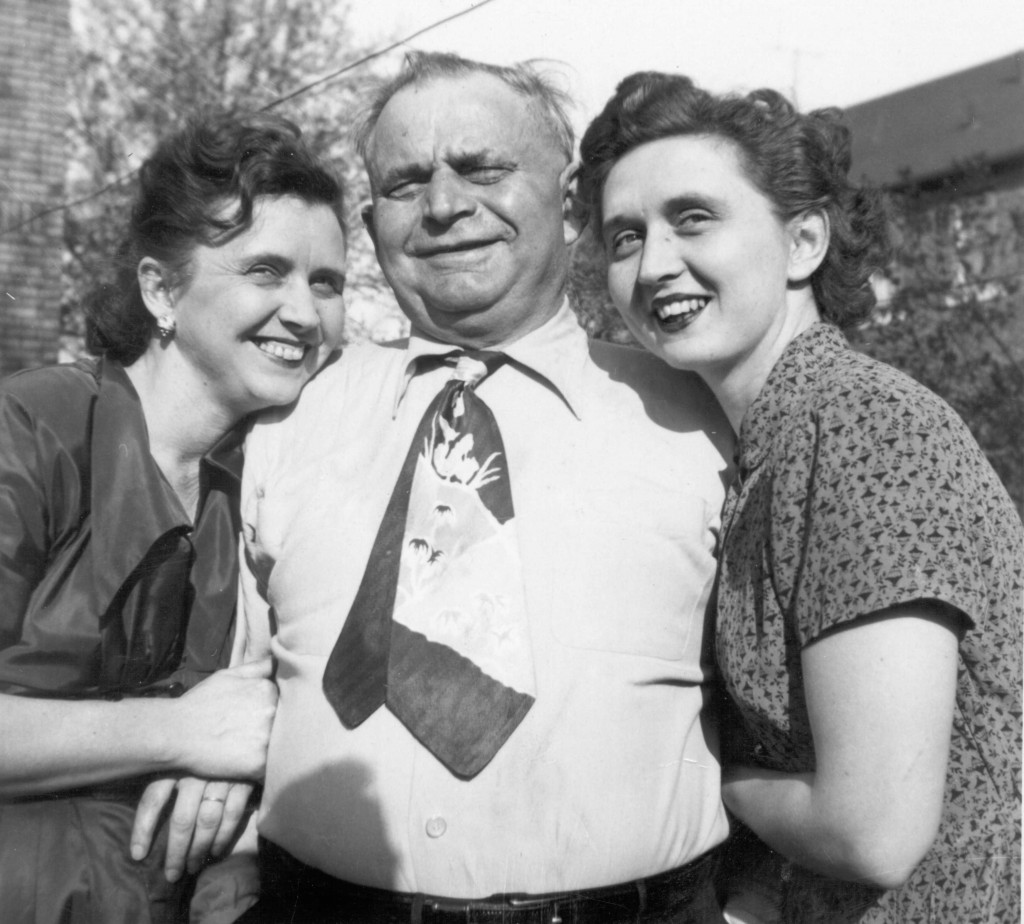A Man Minus a Necktie: A Very Brief History of Ties and a Longer History of Why I Hate Them

My anti-confrontational nature began at birth. Most kids cry when ripped from the womb. I shrugged. So when, during my first post-college agency job, I was prepping for a face-to-face meeting with a client that, for lack of a more tactful way of stating this, hated my company’s fucking face, I was nervous. My palms were sweaty, my heart was pounding, and I remember feeling as though the entire universe had suddenly snapped back like it had exceeded the limit of its cosmic elasticity and it was now pulling back in on itself with me at the very center, suffering the pressure of billions of years of macrocosmic expansion…you know, normal nerves stuff. But the impending client firing squad paled in comparison to the sudden realization, just before stepping out of my office door, that I had no idea how to tie a tie. And worse, I was in no position to ask for instructions. At that time—a new job, bosses to impress, living on my own—I had committed to a facade of manliness that I had never attempted before. This was new, unnerving territory for me. Failing to tie my own tie would not only chip away at the delicate sports-loving, car-jargon-speaking veneer that I had created, but would likely send me relapsing into a life once again governed by sports-indifference and car-jargon illiteracy. I had worked too hard to risk that.
I had no idea what to do. Looking back, I’m certain my coworkers wouldn’t have thought less of me for soliciting help. Almost certainly they would have helped for all the same reasons I erected the manliness facade in the first place:
A new job: “Of course, you’ve never had to do this before. Let me help you,” they would say.
Bosses to impress: “They are not worth impressing,” they would say.
Living on my own: “You should be enjoying your freedom, not worrying about ties. And why doesn’t this tie have vomit on it? You need to get drunk more,” they would say.
How do you untie this vagina?
Knots tease us with promises, promises that—much like the correlative mystery that is the human vagina—given enough patience, finger dexterity, and perhaps a bit of saliva, they can be mastered. That is the purpose of a knot, after all: to be tied and then dare to be untied. This tease, like so many manly things, is what keeps us going (not asking for directions, for example, is just us honoring the landscape’s tease). We know a secret exists somewhere in those mysterious twists of fibers/folds of skin, and no amount of exasperated “just let me do it myself”s nor any volume of faked orgasms will deter us. Oh, tiny bundle of twine/rope/nerve-endings, I will figure you out eventually.
And like a vagina, knots are capable of so much more than most people realize (I bet you never thought a vagina could be so annoyingly and repetitiously compared to a knot, for example). Sometimes romanticized as binding tools for rodeo cowboys and sometimes as the same for ironic Boy Scout strangulation porn, the seemingly simple yet endlessly engaging act of contorting rope speaks to an array of basal manly urges: to control, to secure, and to accent fashion. Half-Windsor for the corporate board meeting? Of course. Ediety for the The Matrix Reloaded cosplay party? Red pill it is, Neo! Granny Knot for the retirement home job interview? You bet…I SAID, “YOU BET” …Hey, can someone please replace Genevieve’s hearing-aid battery?

It turns out the vagina/rope comparison goes both ways
Boy Scouts: Training for Vaginas
For two weeks during an especially confusing 4th grade summer, I desperately wanted to join the Boy Scouts, and not just for strangulation porn. The simple reason: I wanted to be a ninja. Ninjas climb things using rope. Therefore, a working knowledge of knots would surely look great on my ninja resume. Boy Scouts are the ambassadors of knots, so it made sense to infiltrate their church basement meetings. (Why was that 4th grade summer so confusing, you ask? I wasn’t yet aware that Professional Ninja didn’t exist as a real occupation. Some of us grow up slower than others.)
My lack of both knot tying skills and any understanding of job market demand as a 4th grader shouldn’t imply that I lived my entire pre-university life sans-neck accessories. Having neither Boy Scout credentials nor a father to guide me through the frightening world of lynchian neckwear, I had to resort over the years to one of two stand-in repositories for every tie wearing occasion. Either 1) I pulled from my collection of four ties all still knotted since 1998 when pity-gifted to me by peripheral father-figure stand-in (probably an uncle or maybe a homeless guy), or 2) I accepted mentorship from the pool of quasi-men I’ve connected with over the years. I, being a gamma male, was more than willing to embrace the teachings of a beta (an alpha, of course, wouldn’t give me the time of day, what with being busy pounding brews and broads all day).
One such male, a dear friend I met in college, often bragged of his 18-year Boy Scout training, and took to defending rope knots the way right-wing Republicans attempt to defend marital ones, meaning unconvincingly and hypocritically (Republican: “Marriage is sacred,” then, divorce. Friend: “Knots are all you need,” then, uses tape to repair his knotting how-to manual). To this friend, knots were more than just masturbatory aids for sailors, fishermen, and homoerotic asphyxiators (I know what you’re thinking: No wonder ninjas love knots). Knots were tense balls of potential, capable—with the correct brain guiding them—of solving any problem. To my knot-loving friend, the greatest thing since sliced bread was the twist-tie securing the loaf’s plastic bag.
This friend helped me throughout college with any of my knot-tying needs. He once secured a stolen shopping cart to our Freshmen dorm room wall using little more that twine (we called it C’art Deco). He even helped to build a three-story beer bong, which was comprised of 30 feet of clear plastic tubing stretched from the top floor of our house all the way to the basement, weaving through stair railings and air ventilation ducts. After I graduated he even helped me tie down an entire room’s worth of belongings onto the back of a small S-10 pickup truck in prep for my 107-mile drive to Kansas City. I only lost one couch cushion and three shirts along the highway during that move. Had I been in charge of the knots, I would also have lost a wheel or two and a carburetor gasket (I’m not sure if that last thing is a real; remember, car jargon is part of my still-recently cultivated man-facade).
But when leaving for my first on-site client visit for the new job, my Eagle Scout friend’s magical fingers were unfortunately many miles away (Eagle Scout, noun: the highest rank in the Boy Scout world. Origin: some guy who really loved avian based hierarchies). Instead, I was forced to approach one of my female co-workers for tie-knotting help. It turned out that the process of asking for help and then putting instructions to action was much less emasculating than I had feared. I celebrated my small victory with a warm bath and a fresh box of tampons…that’s how women celebrate things, right?
Finally, the history of neckties as the title of this essay promised
To men spoon-fed motor oil and homophobia since birth, admitting that a woman helped me tie a tie may warrant six-pack counseling-turned-disownment on the next hunting trip. For me, it was just one more confirmation in a lifelong series of confirmations that “manliness” isn’t meant for me. I’ve always been a male among females, trying to fit in (just ask my two sisters, who never, ever let me play with their new tampons); the majority of my friends have always been female; and to this day the only facial hair I can grow is a small soul patch below my lower lip, whose hipster implication is offset by gamma-male pride. Being tie-challenged hasn’t granted me access to those coveted blue parking spots, but wearing this disability on my sleeve (often literally) now serves as a reactive litmus test for whom I should avoid for the duration of whatever tie-wearing event I happened to be attending. What else do tie guys in a group (a gaggle? a flock? a rack?) talk about if not ties? Nothing. Just ties. Maybe steaks, but those steaks are definitely wearing ties.
The fear of being outed as a tie dummy is entirely irrational. Origami neckwear serves no evolutionary purpose. At least none that I’m aware of. Perhaps cavemen did woo cavewomen with impressive feats of jugular-chiefery in addition to dino-murder skills but that ridiculous scenario implies that cave people actually co-existed with dinosaurs, which, they did not. Therefore, ties are dumb. The logic works, just don’t think about it too much.
(By the way, if you are keeping count, “jugular-chiefery”is the fifth way I’ve referred to a necktie so far)
* * *
How did knot tying evolve into both a prerequisite for manliness and a necessary skill for curating the defining men’s clothing item? Some say it all began when, during a medieval public lynching the noose somehow fell from the gallows and in the ensuing hysteria the entire event took a turn toward the wacky a la any 1980’s teen movie prom-based denouement complete with nerds (the hanged) turning cool and the cool kids (the hangers) getting their comeuppance. Those people who think that are idiots, though.
The 17th century Croatian military uniform is the widely accepted precursor to the modernday necktie, specifically the dangly, necky part. Unlike today’s neckties however, the Croatian tie actually served a purpose beyond renegade mustard absorption and blood circulation restriction. It turns out that when battling rival armies, identification of your own soldiers is quite important, you know, to avoid giving your position away to the enemy when constantly shouting “whoopsie” and “my bad” after every accidental buddy-stabbing. Some armies solved this dilemma with legitimate uniforms. The Croatian military decided instead to decorate their vulnerable necks with brightly colored, arrow-shaped scarves that were likely inspired by a poet. The earliest known usage of the cravat in history is by Ivan Gundulic (1589-1638), a famous Croatian poet from the City of Dubrovnik. [1]http://www.croatianhistory.net/etf/cravate.html. Perhaps not coincidentally, the earliest known usage of a forearm muscle to wedge pantaloons betwixt a poet’s arse cheeks also involves Ivan … Continue reading Somewhat surprisingly, this dapper Croatian army was actually feared by many other armies.

“Just follow the red line over my heart up to my neck. You’ll want to stab the first jugular on the right. You can’t miss it.”
Eventually the Croatian neck target evolved as haberdashers got lazy in the early 1900s and insisted on comfort over clothing-based masochism. Cravats became longer and narrower over time, but not without a few stylistic hiccups including the 1940s Art Deco ties and later the 1960s-1970s ultra-wide Kipper Tie, both styles which seemed to simultaneously mock the utilitarian Croatian military origins as well as ignore the post-WWII economically thriving American culture’s otherwise collective shift toward trying to no longer look like we made clothing out of found fabric scraps.
I was going to properly explore the origins of neckties by asking a necktie expert–you know, really getting into the history and the cultural adaptation over centuries and continents–but that would mean I would have to talk to a necktie expert. I wasn’t going to waste a perfectly good Saturday on that.

“Does this human make me look fat?”
Perhaps it’s the military history of the tie that causes me, as a contemporary testicled human being, to maintain the theory that superfluous neck fabric is the best way for society to delineate those who demand respect from those who realize the respect of others isn’t worth so much discomfort. But something happens with the act of tightening and straightening a tie knot—once you’ve successfully wasted twenty-three minutes insisting to your mirrored self that just one more try is all you need—a tight knot actually does feel like a legitimate accomplishment.
I’m not blinded enough by the romance of the necktie to pretend that the sense of accomplishment afforded by tying a necktie isn’t manufactured, but manufactured confidence would have to do as I left the office for my meeting with the firing squad client that day so many years ago. During the three-hour car ride to the client’s office I even, dare I admit, conjured a sense of confidence that felt quite deserved. How could they not view me as a shining new beacon capable of resurrecting a relationship that had been fracturing for months?
The meeting did not go well. There was anger. There were vehement threats of a contract cancellation. But even as the client refused to shake my hand afterward, I thought, this can’t be right. Maybe they didn’t see my tie.
If you liked this article, please share it. Please! It would mean the world to me.
Why not help me out? Tweet using one of these pre-composed tweets by simply clicking a tweet below.
Why does @calebjross hate neckties? Hint: it may have to do with vaginas. http://cjrlit.com/1tY6nGr
What is the origin of the necktie? Find out from @calebjross here http://cjrlit.com/1tY6nGr
What do Boy Scouts, neckties, and vaginas have in common? @calebjross makes some connections here http://cjrlit.com/1tY6nGr
Special thanks to Gordon Highland for editing this essay
Footnotes
| ↑1 | http://www.croatianhistory.net/etf/cravate.html. Perhaps not coincidentally, the earliest known usage of a forearm muscle to wedge pantaloons betwixt a poet’s arse cheeks also involves Ivan Gundulic. |
|---|

